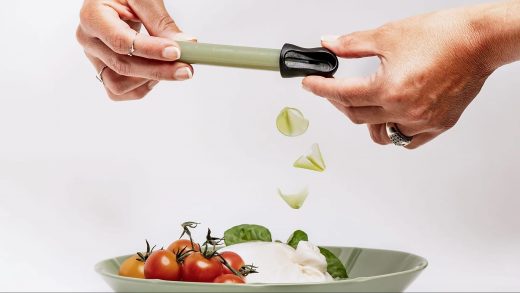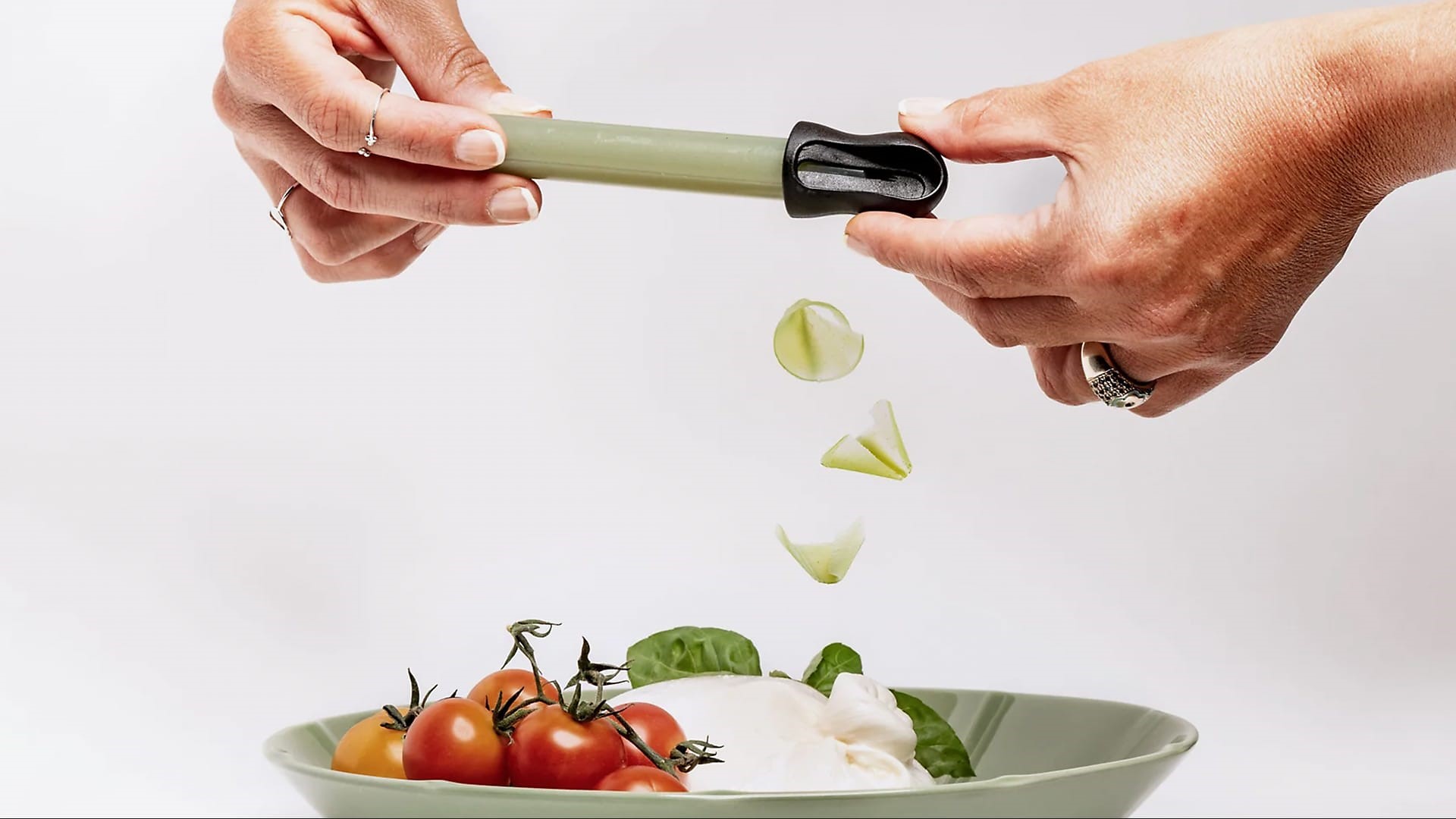11 startups using tech to change the way we eat
July 18, 2024
11 startups using tech to change the way we eat
A sampling of some of the tastiest—and oddest—new foods incorporating technology in various creative ways.
From a robotic chef to an edible crayon that literally draws flavor onto plates, culinary innovators are devouring new tech to sell more food. At the recent Fancy Food Show, 2,300 exhibitors from 56 countries showed off exotic snacks, meats, cheeses, and chocolates over 330,000 square feet of exhibition space in New York’s Javits Center—think six football fields of fine foods.
Here’s a sampling of some of the tastiest—and oddest—new foods incorporating technology in various creative ways that may soon show up at a grocery store near you.
AI-powered food production
Maungo Craft, based in Botswana, makes upcycled, African indigenous gourmet foods. They specialize in jams, sauces, syrups, and juices. Director Olayemi Aganga says that custom GPTs have helped his team revise food formulations when a shortage prevented them from accessing an essential ingredient. And when production managers aren’t available, a custom GPT trained with detailed information about the production process can answer questions from line workers.
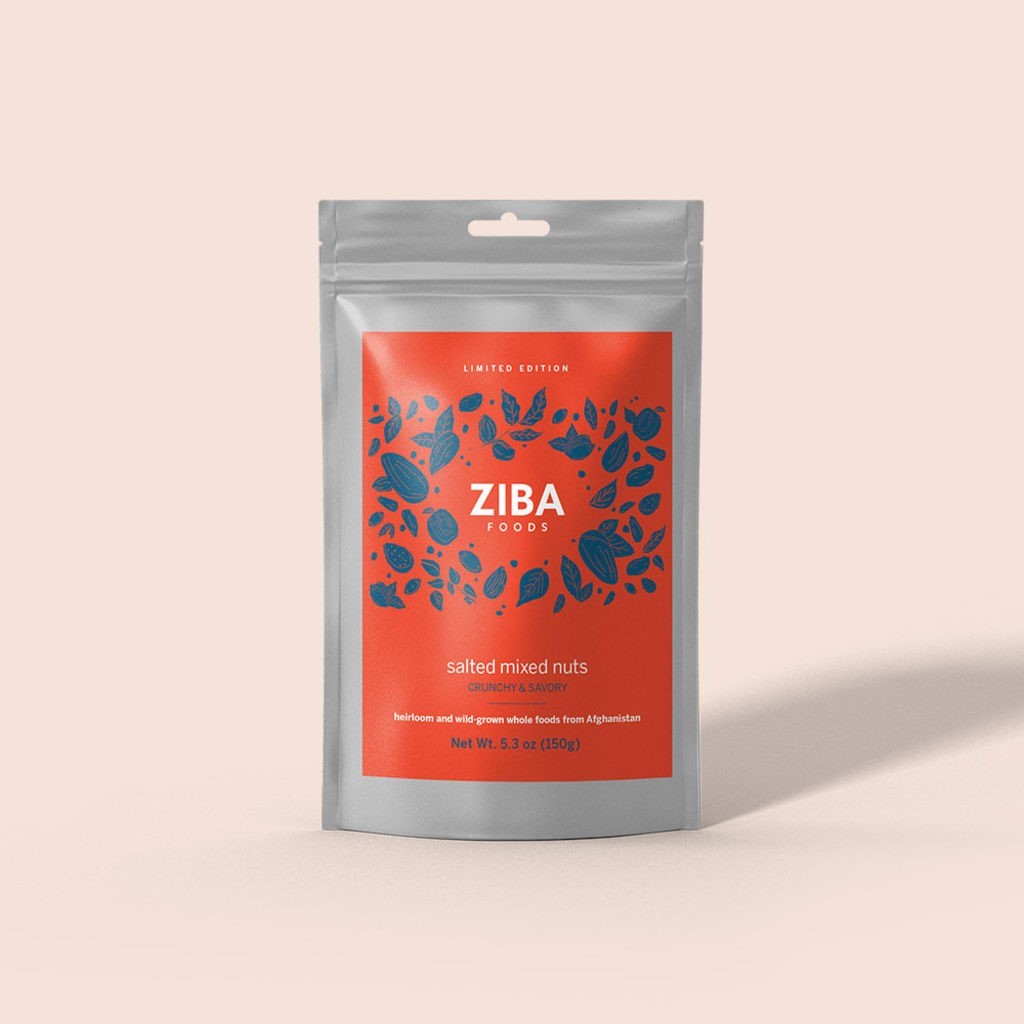
Spotify sounds help sell sprouts from Afghanistan
Ziba sells heirloom and wild-grown dried fruits and nuts from Afghanistan, and 85% of the company’s employees are women. “Many used to get paid in shells, which seemed not fair, so we replaced that with money,” says Ziba cofounder and COO Patrick Johnson. “We’re in the silver linings business,” said Johnson, formerly a Peace Corps volunteer in Niger. To spread the word about the company’s sweet apricot kernels, kishmish raisins, and other snacks, Ziba created a Spotify code that curious consumers can scan to hear Afghani music while sampling nuts and seeds. One of Ziba’s specialties: bringing some of Afghanistan’s 109 varieties of almonds to global consumers.
Sailboat-powered chocolate
Grain De Sail’s organic chocolates travel around the world exclusively on sailboats to avoid airplanes’ environmentally damaging carbon emissions. Cargo sailboats pick up cocoa mass in the Caribbean that’s turned into chocolate in Brittany, France. The sweets then slowly sail to the United States. So far it’s in a limited number of gourmet stores, with aims to reach big chains.
A Robotic Chef
RoboSousChef is the latest robot to try to plug into the food service ecosystem. The fridge-size machine has a screen where you select a recipe. You then deposit a tray with the raw ingredients you’re using, like chicken, vegetables, and grains. It looks like a giant ink cartridge going into a printer. Oil and sauce bins below keep a variety of flavors ready to go. Once the ingredients are in place, the robochef heats, stirs, flavors, and finishes in 12 minutes or however long it takes to stew up a batch of stir-fry chicken. It’s culinary repertoire isn’t unlimited, but it can produce the exact same results time and again with mechanical precision. The company is refining a home version for busy families, and is in talks with a university that feeds 11,000 people at lunch every day to see if four side-by-side robochefs will ease the burden on its cooks.
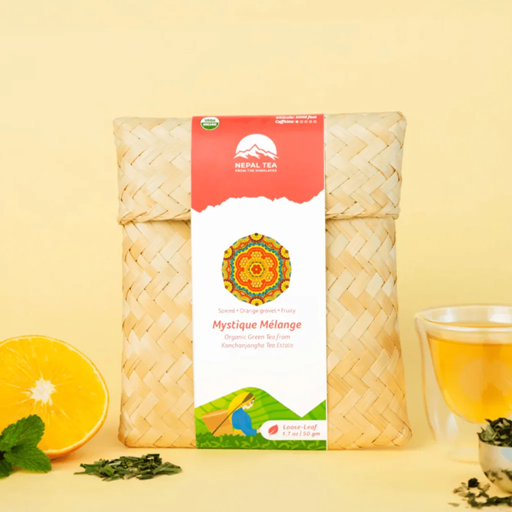
Trace your tea and tip your farmer
The Nepal Tea Collective is a Public Benefit Corporation that puts a QR code on its tea bags so you can see who picked your tea and tip them. Cofounder and COO Pratik Rijal, a third-generation tea family member, says tea pickers he works with used to make about $2 a day. The collective has boosted that by 45% so far by cutting out middlemen from the distribution process. “The industry has to do a lot more,” he says, to move toward a living wage for tea pickers. The collective sells about 100 tons a year of tea, and about 30% of drinkers check the QR code. Those who tip generally give about $1 each, says Rijal.
A Food Crayon
The Food Crayon’s taglines are “color your food with flavor” and “spice up your life.” It works like a crayon sharpener. Twist the crayon’s base, made of a mixture of spices and flavorings, to release flakes of flavoring onto your food. It comes in all sorts of flavors—from black garlic, basil, and lemon to mushroom and carrot orange ginger.
An Edible Candle
Let Them Eat Candles makes chocolate candles that won’t drip or melt on your celebratory cake. The key is a special short wick that keeps the chocolate solid. Think three steps: light, blow, and eat. This gimmicky chocolate light isn’t the only edible candle around. Butter candles like this have gone viral in recent years. Either seems preferable to traditional wax. Drizzled chocolate or butter in a bite beats a wax remnant, right?
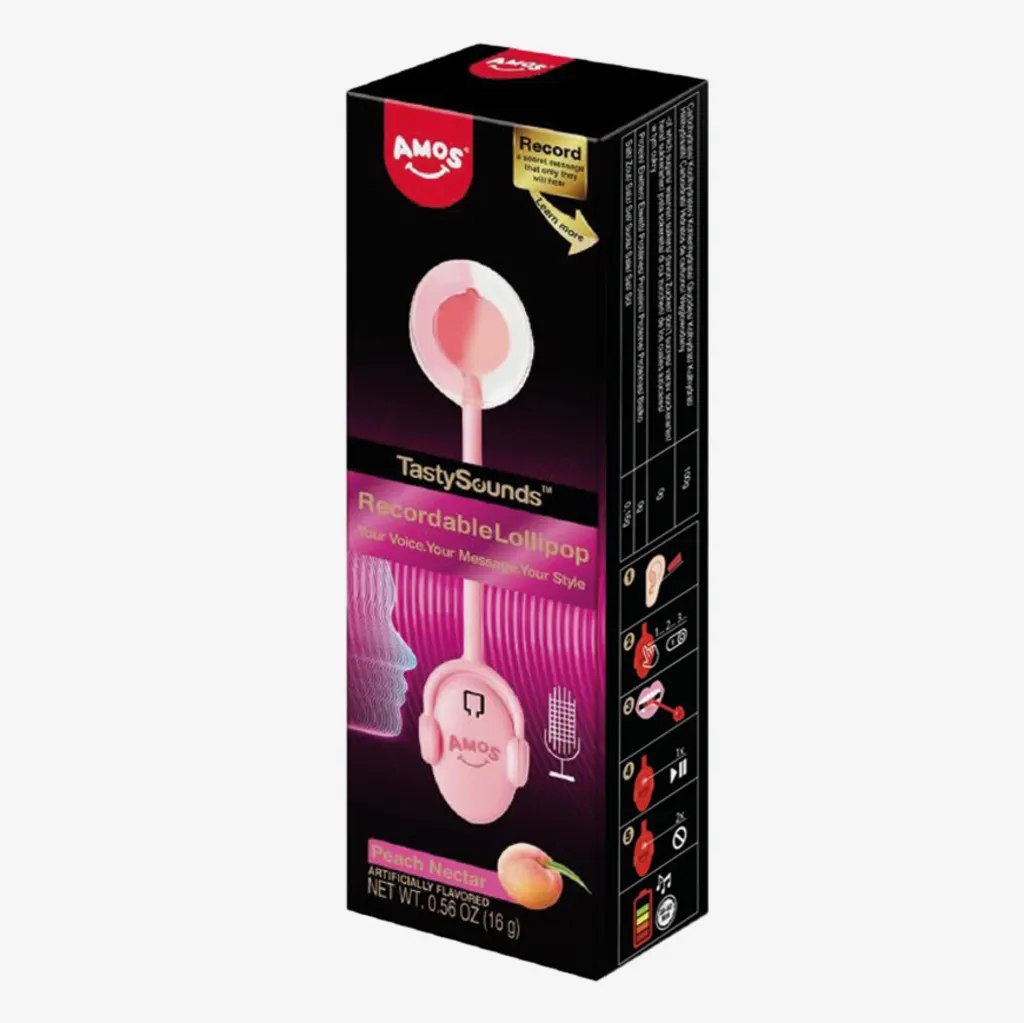
Audio Lollipops
Put an Amos TastySounds lollipop in your mouth and bone conduction tech lets you hear a song while you suck. They’re generally sold with preprogrammed music. But you can also buy a recordable variant for sharing your own special message. Your recipient will hear your voice when they pop the candy between their lips. Don’t expect nutrition with your treat. The ingredients of a strawberry variant: isomaltitol, maltitol syrup, water, lactic acid, xylitol, artificial flavor, sodium lactate, fd&c red no. 40.
Frozen Coffee—or Gelato—Pods
Cometeer flash freezes artisanal coffee into capsules. They ship a box of frozen coffee pucks packed with liquid nitrogen, so they stay frozen and fresh. If you’re a coffee minimalist, you’ll appreciate not needing a grinder or any other special machine. You just take the little puck of coffee, drop it in a mug, and pour hot water. Or for iced coffee, melt the puck and pour it into a cold glass. Another take on single-use pucks comes from Solato, which makes a new gelato machine for hotels and cafes. Drop in a prepackaged capsule to get fresh, on-demand frozen desserts like vanilla, coffee, or lemon mascarpone gelato.
Geothermal genius
Salt might seem like one of the simplest foods to produce. But Saltverk churns out Icelandic sea salt using 100% geothermal energy. The company’s new production process has transformed a 17th century salt-gathering method into a unique underwater production facility. “We’ve tried one million things, and only 15 work,” says Saltverk engineer Gisli Grimsson of the painstaking trial-and-error process. New evaporators are reshaping “an octopus of old ideas” with the highest-grade steel in the world. That helps avoid rusting that can result when a machine works constantly underwater surrounded by salt.
ABOUT THE AUTHOR
Fast Company
(43)

